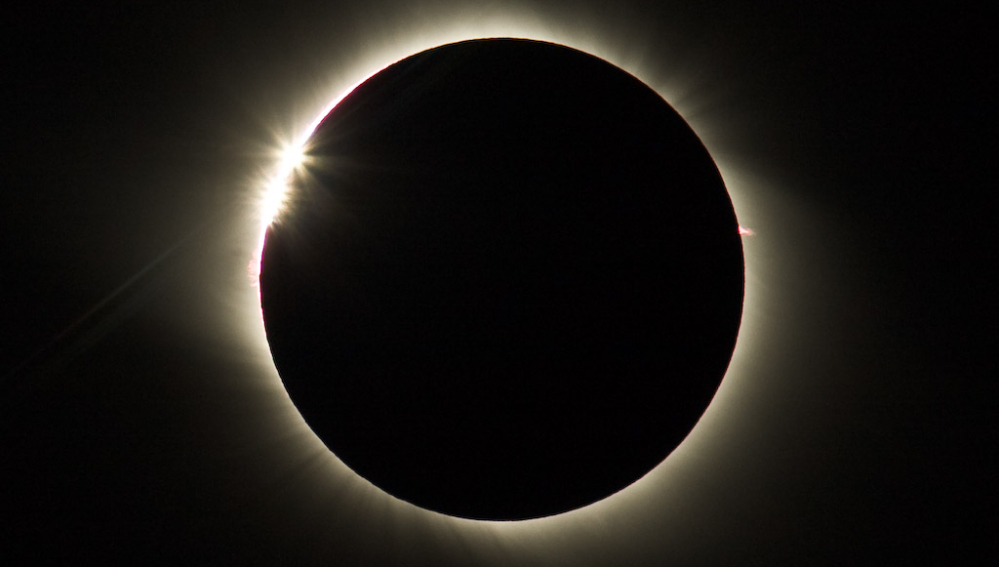In space, NASAs Solar Dynamics Observatory, or SDO, keeps an eye on our nearest star 247. SDO captures images of the sun in 10 different wavelengths, each of which helps highlight a different. Wearing a nearly 5inch coat of carboncomposite solar shields, NASA's Parker Solar Probe will explore the sun's atmosphere in a mission that is expected to. 2010 SunEarth Day Promotional Materials This years desktop wall paper and bookmark will certainly bring a feel to your environment! The composition includes fractal art and imagery from the SOHO, THEMIS and the NASAGoddard Space Flight Center Conceptual Image Lab). This is NASA's official eclipse Web site. It contains maps and tables for 5, 000 years of eclipses and includes information on eclipse photography, observing tips and eye safety. Solar Eclipse main directory for NASA's Solar Eclipse. SciTech NASA Parker Solar Probe launches on historic mission to highfive the sun. The probe will race closer to the sun than we've ever been before to learn more about the solar flares that. NASA is funding eleven studies that span a range of disciplines, using the total solar eclipse to observe the sun, test new instruments, and even leverage the skills of citizen scientists to expand our understanding of the sunEarth system. The latest Tweets from NASAsun (@nasasun1). BREEZE When NASA's Parker Solar Probe launches into space from the Kennedy Space Center, it will begin its journey to the Sun, our nearest star. The Parker Solar Probe will travel almost 90 million miles. NASANaval Research LaboratoryParker Solar Probe NASA's Parker Solar Probe is a little over a month into its sevenyear mission to highfive the sun and it's already producing the goods. Sun with sunspots and limb darkening as seen in visible light with solar filter. Observation data; The Skylab space station, launched by NASA in 1973, included a solar observatory module called the Apollo Telescope Mount that was operated by astronauts resident on the station. The Moon became a key focus point for NASA in 2017, whether it was blocking out the Sun during one of the mostviewed events in U. history, or reinvigorating the agencys human space exploration plans. NASA find two 'Earthlike' planets 49 lightyears away with new telescope THE space agency's Transiting Exoplanet Survey Satellite, known as TESS, was. The Sun's energy is the principal driver of all of Earth's atmospheric events, from weather patterns in the lower layers, through auroras in the upper layers, to the space weather environment of energetic particles at the altitudes of orbiting satellites. The energy originates from the nuclear fusion of hydrogen into helium in the Sun's core (nucleosynthesis). Hot Shots from SOHO SOHO Reveals Rapidly Rotating Solar Core Scientists using the ESANASA SOHO solar observatory have found longsought gravity modes of seismic vibration that imply the Sun's core is rotating four times faster than its surface But that was her reaction in the wee hours today (Aug. 12) as she watched NASA's Parker Solar Probe launch on an unprecedented mission to the sun. It was very emotional, Fox told Space. THE CHILL OF SOLAR MINIMUM: The sun is entering a deep Solar Minimum, and Earth's upper atmosphere is responding. Data from NASA's TIMED satellite show that the thermosphere (the uppermost layer of air around our planet) is cooling and shrinking, literally. The Stanford Experimental Physics Lab sonified data from the European Space Agency and NASA's Solar and Heliospheric Observatory (SOHO). This humming sound captures the Suns natural vibrations and provides scientists with a concrete representation of its dynamic movements. The sun keeps our planet warm enough for living things to thrive. It gives us light so we can see. NASA needed the mighty 23story rocket, plus a third stage, to get the Parker probe the size of a small car and well under a ton racing toward the sun, 93 million miles (150 million. The spectrum was created at the McMathPierce Solar Observatory and shows, first off, that although our whiteappearing Sun emits light of nearly every color, it. Watch or download the latest launch videos, mission updates, animations, This Week @NASA, ScienceCast and more. Watch the Sun Erupt in a Symphony of Solar Storms. NASA's Solar Dynamics Observatory satellite uses specialized ultraviolet cameras to capture stunning images of the sun's solar storms. Wearing a nearly 5inch coat of carboncomposite solar shields, NASA's Parker Solar Probe will explore the sun's atmosphere in a mission that begins in the summer of 2018. Here are some of the key discoveries and ideas that led to our current understanding of the corona and the solar wind, leading up to the newest spacecraft in NASAs Heliophysics fleet. The latest Tweets from NASA Sun Space (@NASASun). We study the Sun and how it affects space around Earth and other worlds, producing key knowledge to protect astronauts, satellites and robotic missions. NASA Goddard, Greenbelt, MD NASA's mission is to pioneer the future in space exploration, scientific discovery and aeronautics research. To do that, we have worked around the world a Everyone knows that Earth, Mars and Jupiter are planets. It must orbit a star (in our cosmic neighborhood, the Sun). It must be big enough to have enough gravity to force it into a spherical shape. Jim Green, director of NASA Planetary Science, speaks to attendees of the 2013 IAA Planetary Defense. Watch videoNasa says it has identified a huge hole in the Sun, measuring an estimated 75, 000 miles wide. It has been dubbed AR2665 by the space agency and experts have warned it. NASA's Parker Solar Probe is swinging by Venus on its unprecedented journey to the sun. Launched in August, the spacecraft gets a gravity assist Wednesday as it passes within 1, 500 miles (2, 400. The Sun may look placid to us here on Earth, but specialized instruments reveal how active and dynamic it really is. Learn about our star's stormy outbursts from solar flares to CMEs on the latest episode of Gravity Assist. Onscreen: This weekend, NASA launches a spacecraft bound for the Sun. The Parker Solar Probe will fly through the Suns corona, its outer. This path, where the moon will completely cover the sun and the sun's tenuous atmosphere the corona can be seen, will stretch from Salem, Oregon to Charleston, South Carolina. Observers outside this path will still see a partial solar eclipse where the moon covers part of the sun's disk. NASA created this website to provide a guide to this. Data from NASAs Orbiting Carbon Observatory2 (OCO2) are helping scientists study increases in Earth's atmospheric carbon dioxide levels. The TSIS instrument on the International Space Station is continuing NASA's 40year record of tracking the Sun's radiant energy. gov brings you the latest images, videos and news from America's space agency. Get the latest updates on NASA missions, watch NASA TV live, and learn about our quest to reveal the unknown and benefit all humankind. The corona is in the outer layer of the Suns atmospherefar from its surface. Yet the corona is hundreds of times hotter than the Suns surface. An artistic rendering of the Parker Solar Probe in the Suns corona. Image: NASA Johns Hopkins In the wee hours of Saturday morning, a carsized NASA spacecraft will embark on its journey to. Get the latest space exploration, innovation and astronomy news. com celebrates humanity's ongoing expansion across the final frontier. National Aeronautics and Space Administration; NASA Official: Rodney Grubbs Usage Guidelines Privacy FOIA Contact NASA API Docs Privacy FOIA Contact NASA API Docs NASAs Parker Solar Probe will swoop through the Suns atmosphere 24 times. The spacecraft will carry more than scientific instruments on this historic journey it will also hold more than 1. 1 million names submitted by the public to go to the Sun. SDO is designed to help us understand the Sun's influence on Earth and NearEarth space by studying the solar atmosphere on small scales of space and time and in many wavelengths simultaneously. STEREO consists of two spacebased observatories one ahead of Earth in its orbit, the other trailing behind. With this new pair of viewpoints, scientists will be able to see the structure and evolution of solar storms as they blast from the Sun and move out through space. US space agency NASA is getting ready to launch mankinds first mission to the sun: a carsized probe called the Parker Solar Probe will loop around the sun while exploring its corona, the outermost part of the suns atmosphere, which reaches extremely high temperatures. Following a successful launch last month that placed it on a path to rendezvous with the Sun, NASAs Solar Parker Probe has fired up its scientific instruments for the first time. The Space Weather Media Viewer is a Flashbased interactive tool kit built to support the major public outreach initiatives of NASA's SunEarth Connection. The Space Weather Media Viewer is a Flashbased interactive tool kit built to support the major public. The heliopause, which is the boundary between the gas from the Sun and the gas of interstellar space, is probably between 150 and 300 AU out (150 to 300 times the distance from the Earth to the Sun) in the direction that the Sun is traveling. NASA's Solar Eclipse Bulletins were special publications issued periodically that focused on major upcoming solar eclipses. Each bulletin contained detailed eclipse predictions, local circumstances, maps and climatological data along the eclipse path..











